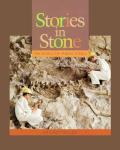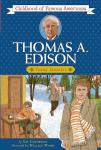Elementary
Little House on the Prairie
Holy Papers
This booklet provides thirty-three pages of lined paper with beautiful Catholic pen and ink illustrations. The pages are intended for handwriting practice and may be photocopied for use within your own family. Following the lined pages are approximately forty pages of beautiful religious quotes - printed in both script and cursive - for practicing handwriting. Quotes are organized according to themes such as Adoration, Conscience, Eucharist and Obedience.
Simply Grammar
A very simple and lovely grammar book based on the text First Grammar Lessons written by Charlotte Mason in 1928. The text is illustrated with charming 19th century drawings which are used within the text for exercises such as: completing sentences and making sentences of certain types and telling stories using certain parts of speech. The text is intended for fourth grade and up (the Charlotte Mason method recommends waiting until then for formal grammar studies - focusing on reading and narration earlier).
Stories in Stone
Although this is a meaty book for its age level and rather lengthy, my children were completely absorbed when I read this aloud to them.
Stories in Stone presents the "World of Animal Fossils" and the story of the dinosaurs from the point of view of generally accepted scientific theories of today. Chapter 1 (A Rock Sandwich) covers introduces the idea of fossils, how they were formed, types of fossils, the scientific classification of animal species ("Why Dinosaur Names are Hard to Spell") and how scientists determine the age of fossils.
The Universe: Think Big!
Jeanne Bendick, author of Archimedes and the Door of Science, explains some basic concepts regarding the universe in a surprisingly simple way (approximately 2nd grade reading level - short pages with large type). First she invites children to try to imagine how big the universe is (in terms of it being much, much bigger than other, more familiar things). The bulk of the book focuses on large distances and how they're measured and how people used to believe that the earth was at the center of the universe and remained motionless. The final page explains the big bang theory.
The Pharaohs of Ancient Egypt
Thomas A. Edison: Young Inventor
This is a fascinating and often humorous story of one of the most renowned inventors of all time. As a boy, Edison was fascinated by the world around him and full of questions about everything. Although he had many mentors as a boy, his first grade teacher reacted so negatively to his natural curiosity that his mother took him out of school and taught him at home. His adventures involving chemistry, trains and printing newspapers make for enjoyable and interesting reading.









